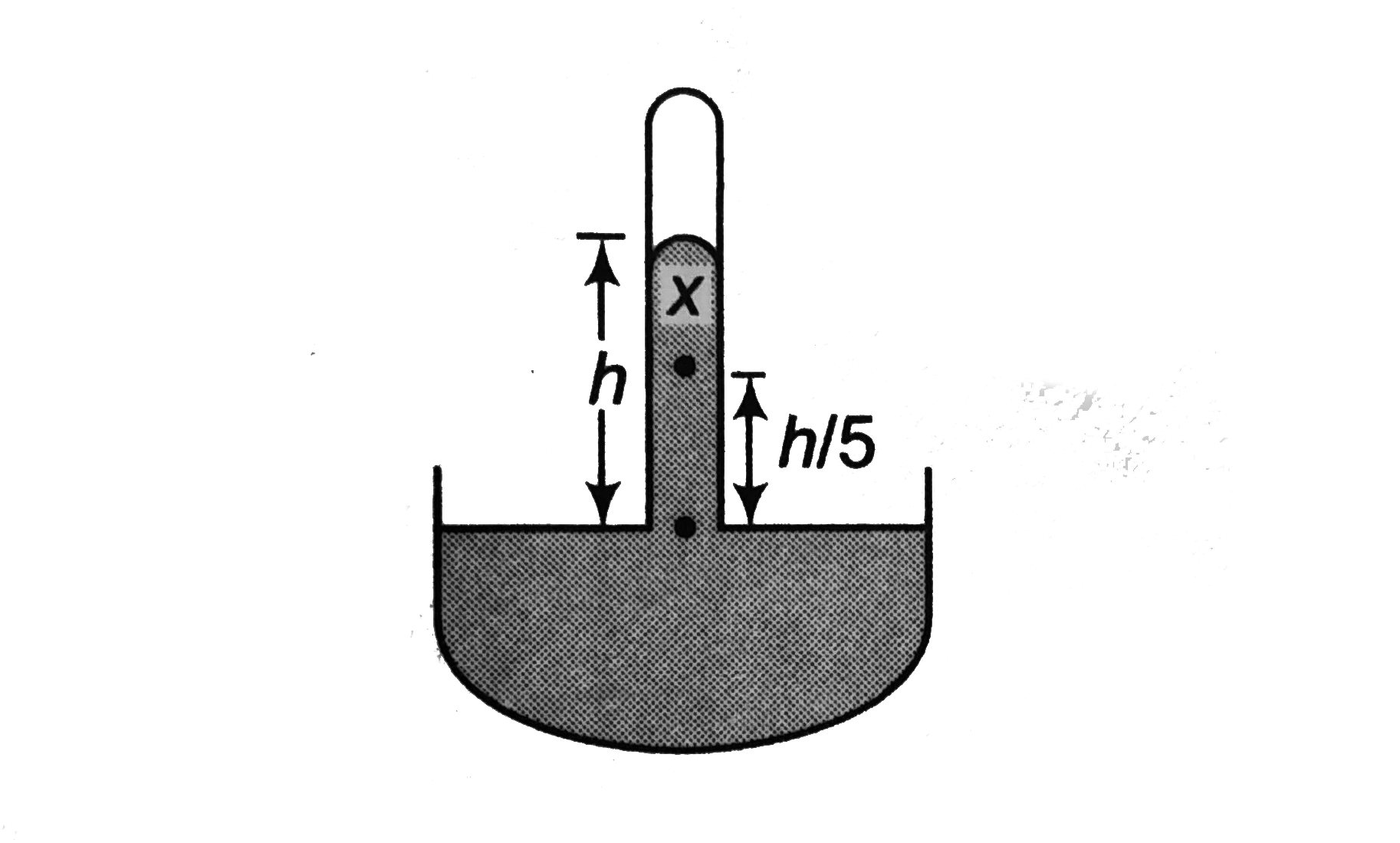The pressure given by a mercury barometer is always less than actual pressure. Why?
To understand why the pressure given by a mercury barometer is always less than the actual pressure, we can break down the explanation into several steps:
Step 1: Understanding the Mercury Barometer
A mercury barometer is a device used to measure atmospheric pressure. It consists of a glass tube filled with mercury, which is inverted into a basin of mercury. The height of the mercury column in the tube indicates the atmospheric pressure.
Step 2: The Role of Surface Tension
When mercury is in contact with the glass of the barometer, it experiences a phenomenon known as surface tension. Surface tension is the cohesive force that causes the surface of a liquid to behave like a stretched elastic membrane. In the case of mercury, this results in a curvature at the surface where it meets the glass.
Step 3: Effect of Surface Tension on Mercury Level
Due to surface tension, mercury does not rise to the full height that it would if there were no surface tension. Instead, the mercury level is depressed slightly in the capillary tube. This means that the height of the mercury column is lower than it would be if the surface tension were not affecting it.
Step 4: Implication for Pressure Measurement
Since the height of the mercury column is lower than it should be due to the surface tension effect, the pressure reading obtained from the barometer is less than the actual atmospheric pressure. The actual pressure is greater than what is indicated by the barometer.
Conclusion
In summary, the pressure indicated by a mercury barometer is always less than the actual pressure due to the depression of the mercury column caused by surface tension.
---
A mercury barometer is a device used to measure atmospheric pressure. It consists of a glass tube filled with mercury, which is inverted into a basin of mercury. The height of the mercury column in the tube indicates the atmospheric pressure.
When mercury is in contact with the glass of the barometer, it experiences a phenomenon known as surface tension. Surface tension is the cohesive force that causes the surface of a liquid to behave like a stretched elastic membrane. In the case of mercury, this results in a curvature at the surface where it meets the glass.
Due to surface tension, mercury does not rise to the full height that it would if there were no surface tension. Instead, the mercury level is depressed slightly in the capillary tube. This means that the height of the mercury column is lower than it would be if the surface tension were not affecting it.
Since the height of the mercury column is lower than it should be due to the surface tension effect, the pressure reading obtained from the barometer is less than the actual atmospheric pressure. The actual pressure is greater than what is indicated by the barometer.
In summary, the pressure indicated by a mercury barometer is always less than the actual pressure due to the depression of the mercury column caused by surface tension.
Topper's Solved these Questions
- BOOK - ICSECHAPTER - PROPERTIES OF MATTEREXERCISE - MODULE 2(SURFACE TENSIONS)LONG ANSWER QUESTIONS9videos
PROPERTIES OF MATTER
- BOOK - ICSECHAPTER - PROPERTIES OF MATTEREXERCISE - MODULE 2(SURFACE TENSIONS)SHORT ANWER QUESTIONS23videos
PROPERTIES OF MATTER
- BOOK - ICSECHAPTER - PROPERTIES OF MATTEREXERCISE - MODULE 1 (ELASTICITY) FROM WORK DONE IN STRETCHING A WIRE4videos
PROPERTIES OF MATTER
- BOOK - ICSECHAPTER - OSCILLATIONS EXERCISE - SELECTED PROBLEMS (OSCILLATION IN A TUNNEL BORED THROUGH THE EARTH)2videos
OSCILLATIONS
- BOOK - ICSECHAPTER - SAMPLE QUESTION PAPER - 01 EXERCISE - SECTION - D12videos
SAMPLE QUESTION PAPER - 01
Similar Questions
Knowledge Check
- Question 1 - Select One
Assertion : Work done during free expansion of an ideal gas whether reversible or irreversible is positive.
Reason : During free expansion, external pressure is always less than the pressure of the system.AIf both assertion and reason are true and reason is the correct explanation of assertion.BIf both assertion and reason are true but reason is not the correct explanation of assertionCIf assertion is true but reason is false.DIf both assertion and reason are false.
The height of mercury barometer is h when the atmospheic pressure is 105Pa. The pressure at x in the shown diagram is
 View Solution
View SolutionBetween breaths, the intrapleural pressure is approximately _______ mmHg less than atmospheric pressure.
View SolutionWhat happened when the intrapulmonary pressure is less than atmospheric pressure ?
View SolutionThe observed pressure of real gas is more than the ideal pressure.
View SolutionWhy mercury is used in barometer for measuring atmospheric pressure?
View SolutionThe column of mercury in a barometer is 76mm of Hg. Calculate the atmospheric pressure if the density of mercury = 13600kgm −3 . (Take g=10ms −2 )
View SolutionA faulty barometer contains certains amount of air and saturated water vapour . It reads 74.0cm when the atmospheric pressure is 76.0cm of mercury and reads 72.10cm when the atmospheric pressure is 74.0cm of mercury.Saturation vapour pressure at air temperature =1.0cm of mercury. Find the length of the baromerer tube above the mercury level in the reservoir.
View Solution

